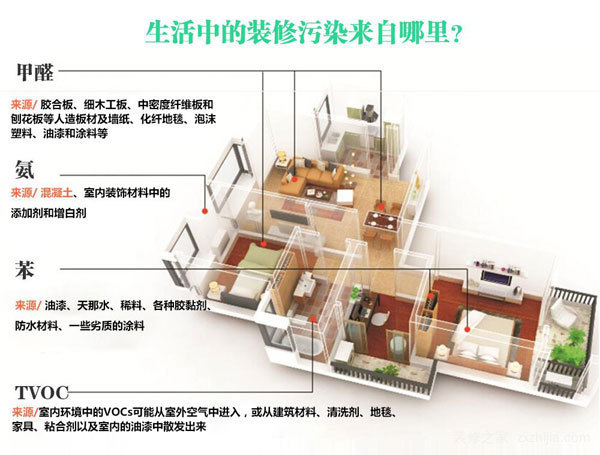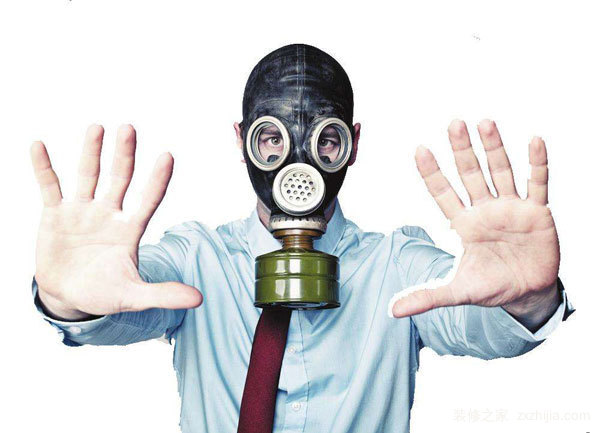Where does the interior decoration pollution come from? What is the danger?
With the improvement of people's living standards, the awareness of indoor environment is gradually improving, and the health of themselves and their families is becoming more and more concerned. In recent years, the problems caused by indoor decoration pollution have caused people's hot discussion, which is a topic that many owners are more concerned about. Today, Xiaobian will talk about the pollution of interior decoration for everyone. When it comes to interior decoration pollution, everyone must be familiar. So everyone knows what is indoor decoration pollution? Home improvement pollution refers to the materials used in interior decoration and decoration to emit harmful and toxic pollutants, polluting the indoor environment. This kind of indoor pollution from the decoration itself is called home decoration pollution. If the indoor air is too high in the amount of decoration and it will not be solved for a long time, it will cause physical discomfort and affect health. Commonly caused by household pollution: formaldehyde; benzene series: benzene, toluene, xylene; total volatile organic compounds (TVOC). Then those decoration materials are easy to cause pollution? Formaldehyde is derived from artificial boards, adhesives and coatings; benzene series are mainly derived from paint thinners, waterproof coatings, and rubber paints; TVOC total volatile organic compounds are mainly derived from paints, glues, etc. . Among them, formaldehyde is the most important source of pollution, and it is also the most influential to children, pregnant women and the elderly. The decoration materials are not non-toxic, basically have more or less harmful substances, and they are not easy to be found, so we call them "invisible killers." According to some data, the amount of organic matter such as formaldehyde, benzene, toluene, xylene and TVOC in the newly renovated rooms in China is about 70%. Many decorative materials are produced using chemically synthesized articles such as adhesives, paints, and plastic components. Various artificial boards (particleboard, fiberboard, plywood, etc.) may contain organic substances such as formaldehyde and benzene due to the use of a binder. Formaldehyde is a colorless, easily soluble irritating gas with low volatility and high toxicity. Formaldehyde can be absorbed through the respiratory tract. Modern scientific research shows that formaldehyde has a serious adverse effect on human health. Long-term exposure to low-dose formaldehyde can cause chronic respiratory diseases, female menstrual disorders, pregnancy-induced hypertension syndrome, fetal dysplasia, neonatal weight loss, and chromosomal abnormalities. High concentrations of formaldehyde are toxic to the nervous system, immune system, liver, etc. Formaldehyde also has teratogenic and carcinogenic effects. People who have been exposed to formaldehyde for a long time can cause cancer in the nasal cavity, mouth, nasopharynx, throat, skin and digestive tract. Indoor air pollution directly affects people's health and causes diseases such as the respiratory tract. With the arrival of summer, indoor air pollution has gradually entered a period of high incidence. To this end, Dai Zizhu suggested that the first is to control indoor pollution sources, select or develop green building materials and decorative materials, with caution or less use of chemicals, cosmetics and various aerosols. The second aspect is ventilation, and the third aspect is air purification, using a variety of air purification facilities. The above is a detailed answer to the interior decoration pollution, I do not know if you are satisfied with the introduction of the decoration home network Xiaobian. If you want to know more about the exciting content, please continue to pay attention to our water and electricity section! More related wonderful reading: What is indoor decoration pollution? What are the indoor decoration pollution? Deadly indoor decoration pollution, early detection and early prevention Seven Mistakes in Inventorying Pollution Control of Interior Decoration
High Temperature Alloy is divided into three kinds of material: 760 ℃ high-temperature material, 1200℃ high temperature and 1500 ℃ high temperature materials, the tensile strength is 800 mpa. On other words,it refers to the metal material worked well in the condition of 760-1500 ℃ or above. It owns excellent high temperature strength, good resistance to oxidation and thermal corrosion resistance, good fatigue properties, fracture toughness and other comprehensive performance, this kind of material has became an irreplaceable key material in military and civilian gas turbine engine hot end components . According to the relevant theory, 760 ℃ high-temperature materials, according to the matrix elements,can be mainly divided into high temperature iron base alloy, nickel base superalloy and cobalt-based super alloy. According to the preparation process,it can be divided into deformation and high temperature alloy, casting high temperature alloy and powder metallurgy super alloy. According to the solid methods,it can be divided into solid solution strengthening, precipitation strengthening and oxide dispersion strengthened with fiber reinforced type, etc.
High Temperature Alloy High Temperature Alloy,High Temperature Alloy Wire,High Temperature Alloy Anti-Corrosion ,High Temperature Tooling Tungsten Alloy Jiangsu nickel alloy Co.,Ltd , https://www.xhalloy.com

